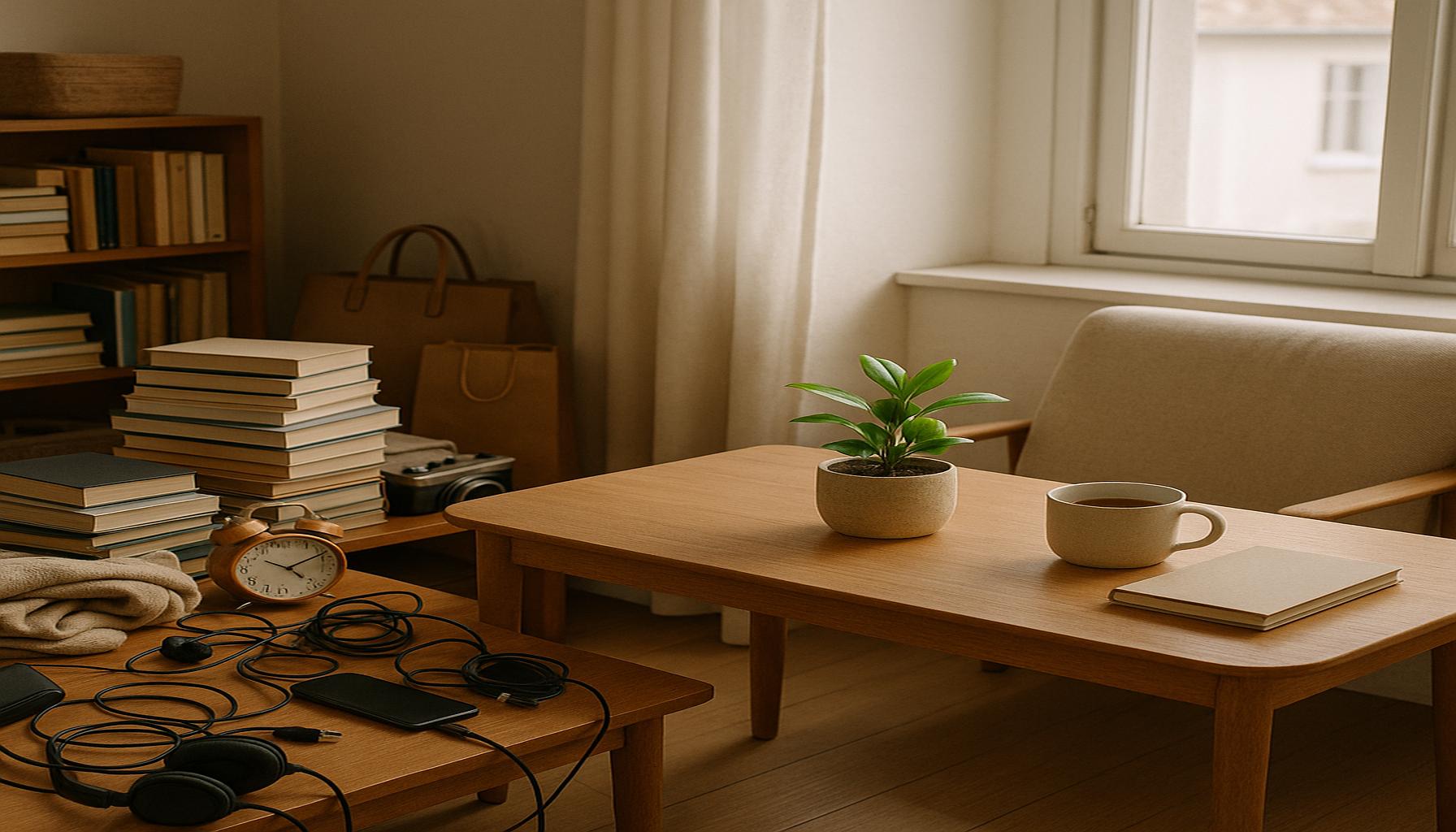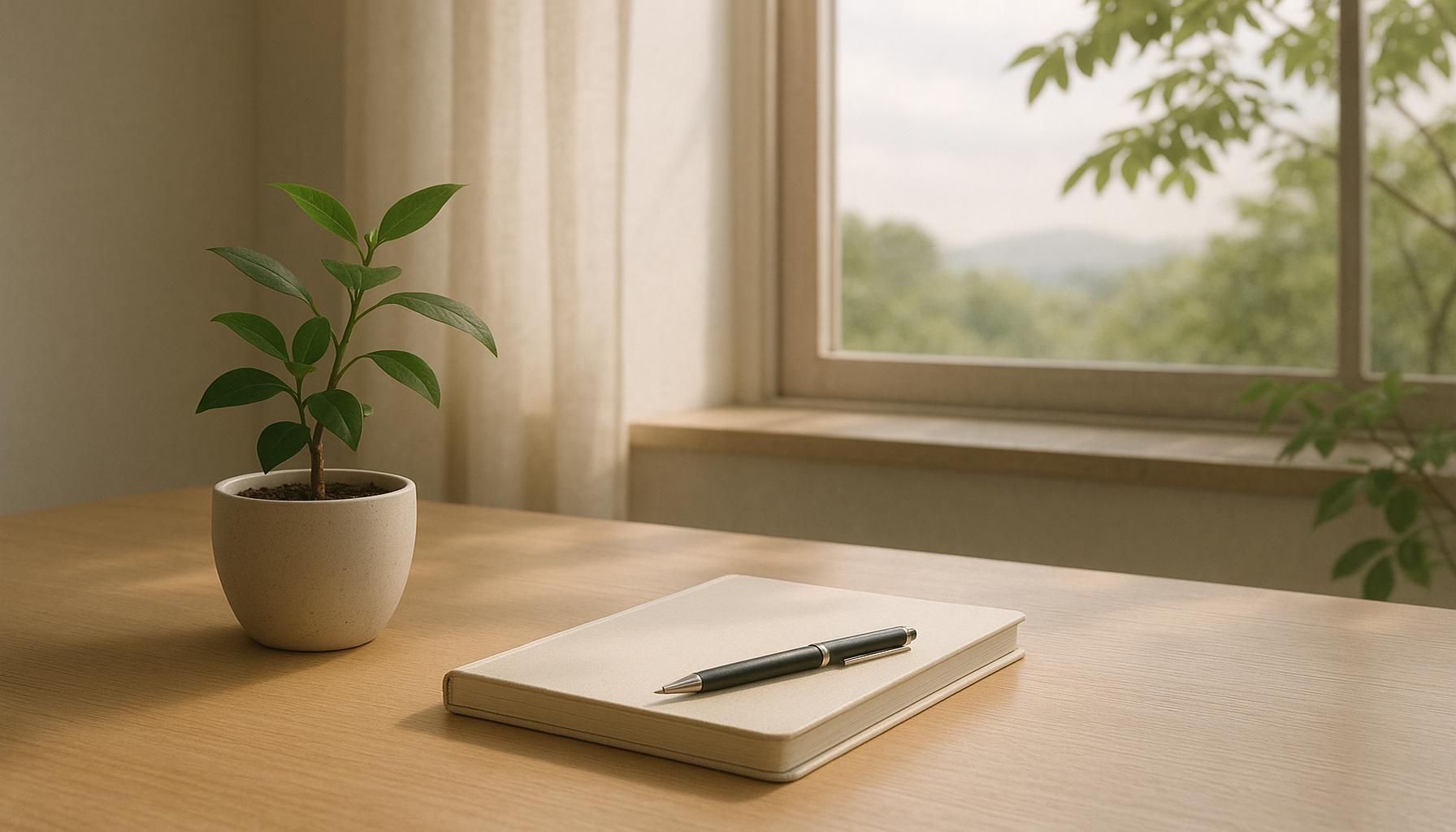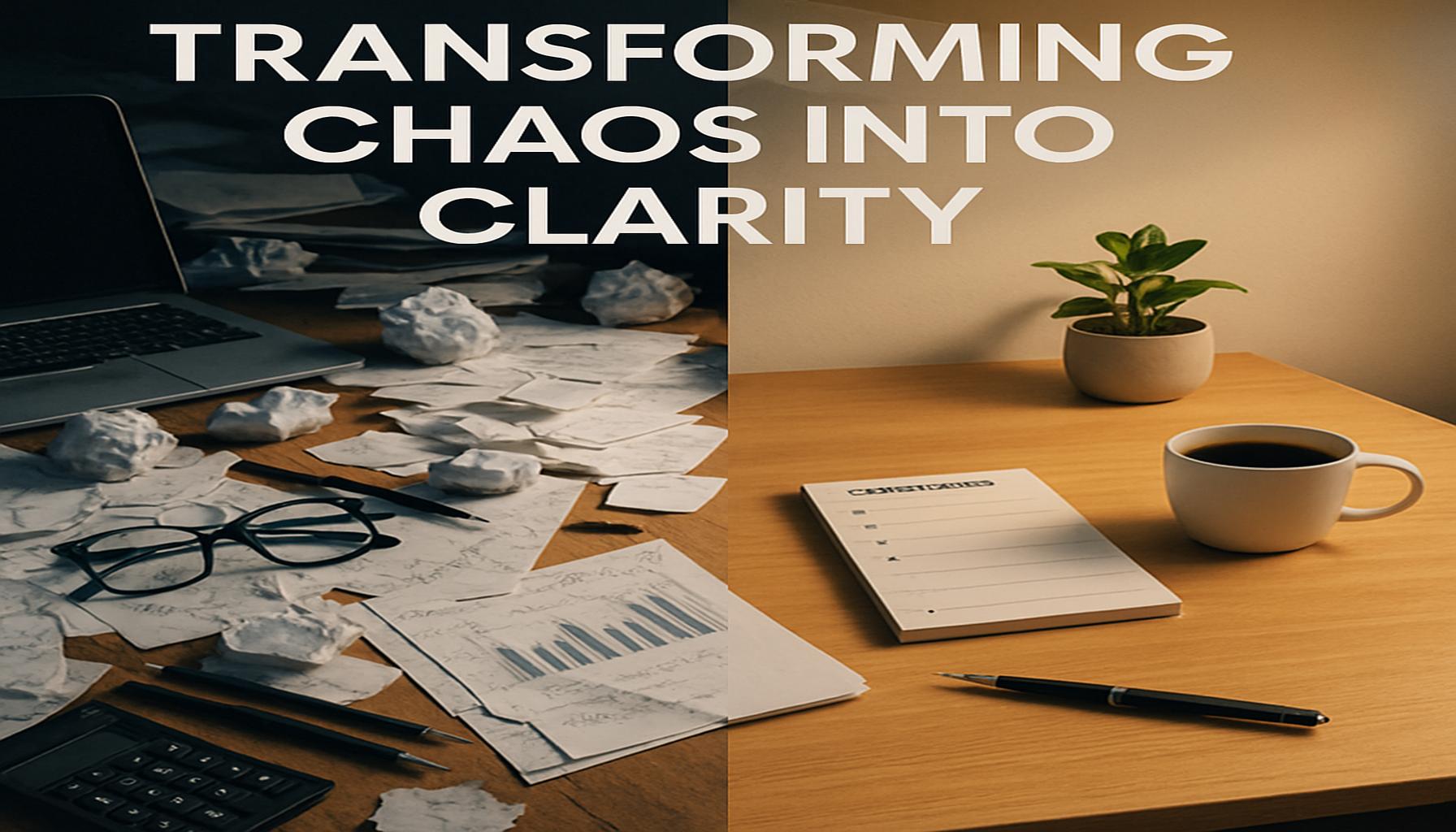Visual Priorities: Organizing Your Environment to Reflect What Truly Matters
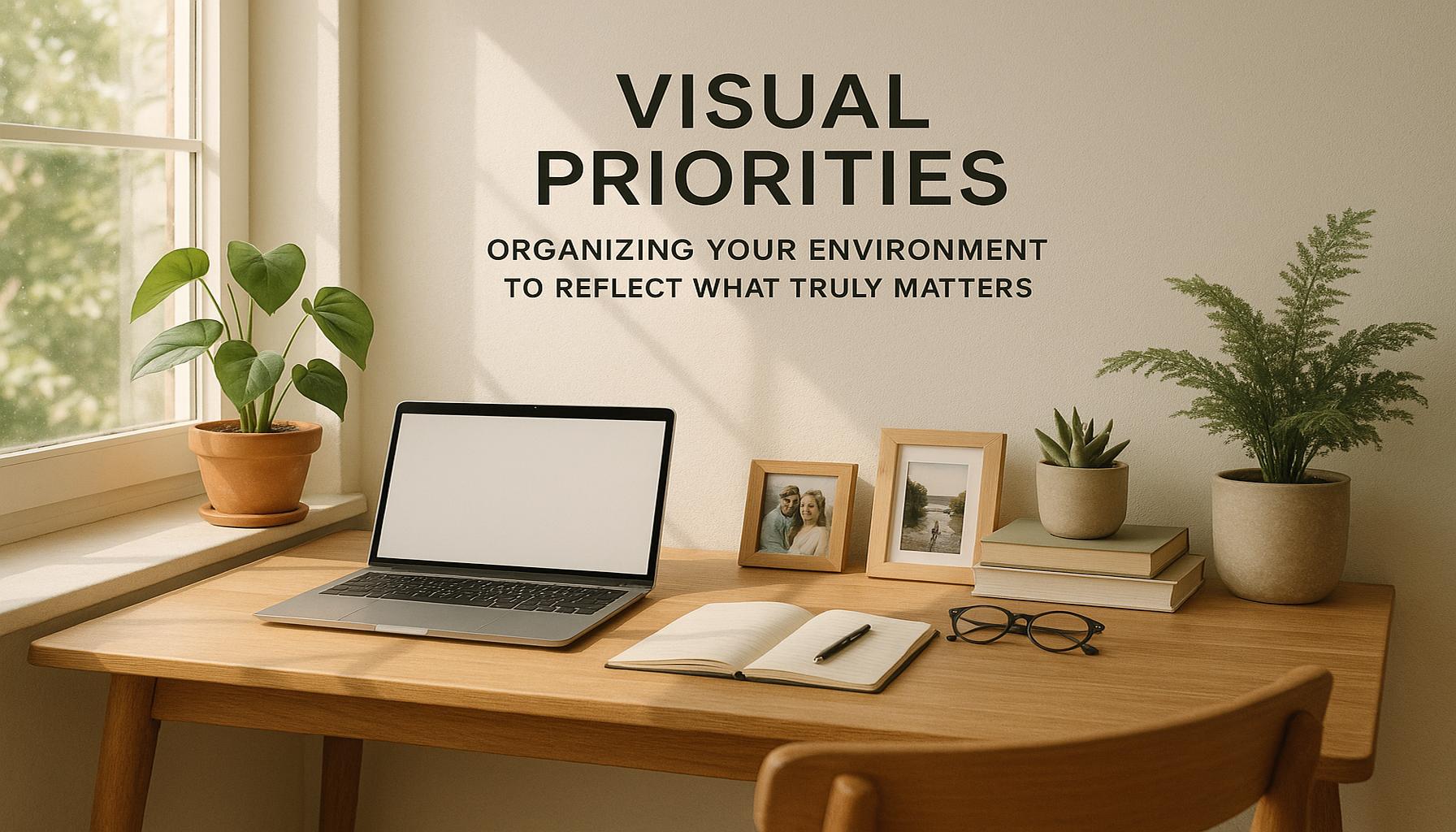
Understanding Visual Priorities in Our Spaces
In a world cluttered with distractions, understanding our visual priorities can transform our daily lives. The spaces we occupy, whether at home, work, or leisure, significantly influence our thoughts, emotions, and actions. Amid the chaos of modern life, consciously organizing these environments can help us reflect what truly matters, fostering a sense of control and intentionality.
Benefits of a Well-Organized Space
A well-organized environment provides numerous benefits that can enhance both mental and physical well-being. Here are some immediate advantages:
- Enhanced Productivity: Reducing clutter can lead to improved focus. For instance, a clean desk allows individuals to concentrate better on tasks at hand, cutting down on time wasted sifting through disorganized materials. Studies have shown that people can increase their output by as much as 25% when working in a tidy environment.
- Decreased Stress: A serene space fosters calmness and reduces anxiety. Environments filled with chaos can trigger feelings of overwhelm and distraction, making it difficult to relax or perform tasks effectively. Implementing calming colors and minimizing visual noise can create a sanctuary that supports well-being.
- Clarity of Purpose: Simplifying your surroundings can help clarify your goals. For example, having a designated area for important documents and inspiring visuals—like vision boards or quotes—can reinforce one’s aspirations, ensuring that daily actions align with long-term objectives.
Creating Visual Priorities
To start organizing your environment effectively, consider these actionable steps:
- Identifying Key Values: It’s crucial to know what truly matters to you. This could be your family, career aspirations, or personal health. Taking time to reflect on these core values can guide your organizational efforts and ensure that your environment supports your aspirations.
- Decluttering Regularly: Establish a routine for reassessing your belongings to ensure they align with your priorities. Regularly eliminating unnecessary items—perhaps through a seasonal declutter—can help maintain a fresh perspective and prevent buildup over time.
- Incorporating Meaningful Decor: Choose items that inspire and reflect your values. Whether it’s artwork, photos, or trinkets that evoke joyful memories, ensuring your space is filled with meaningful decor can create emotional resonance and motivation in daily life.
Ultimately, organizing your environment is an ongoing journey that impacts both your personal and professional life. By setting clear visual priorities, you can create a space that inspires action and aligns with your true self. Such intentional living not only enhances day-to-day experiences but also contributes to long-term fulfillment and purpose. Taking the first step, however small, can lead to profound changes that cultivate a more focused and happy life.
DIVE DEEPER: Click here to discover more strategies
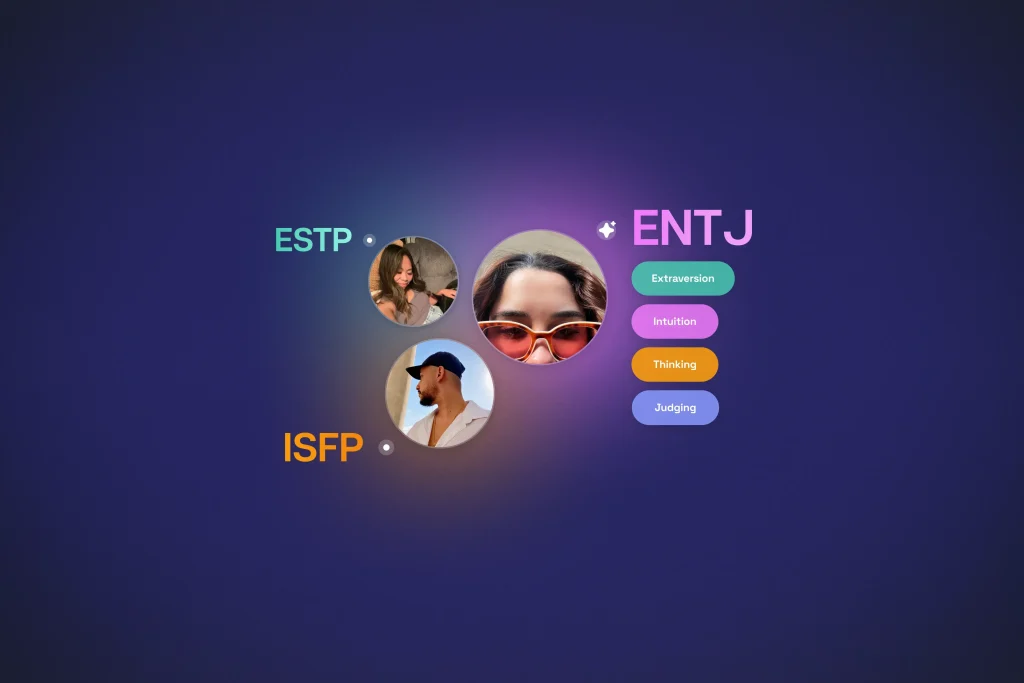
Establishing Your Visual Norms
Understanding visual priorities goes beyond simple aesthetics; it serves as a pivotal strategy for enhancing your everyday life. When you prioritize visual elements in your environments, you are essentially crafting spaces that encourage productivity, stimulate creativity, and promote well-being. The way we arrange our surroundings can greatly affect our mood, motivation, and mindset. Hence, establishing visual norms that resonate with our core values can lead to a more fulfilling existence.
Recognizing the Impact of Space
Research has shown that our environments can have a profound effect on our behavior. For instance, studies conducted by environmental psychologists indicate that individuals working in environments adorned with nature-inspired visuals—like plants or landscapes—report higher levels of job satisfaction and decreased stress. Spaces that lack such connections tend to feel sterile and uninspiring, detracting from one’s sense of belonging and engagement.
Moreover, the arrangement and design of your surroundings can influence various aspects of your life, including:
- Creativity: An artist’s studio filled with colorful palettes and inspirational artwork can stir creativity and innovation. In contrast, a bland environment can stifle ideas and lead to creative blocks.
- Social Interactions: Spaces that are inviting encourage gatherings and interactions. For example, an open layout with comfortable seating fosters communication and connection among friends and family.
- Health and Wellness: Environments that prioritize natural light and ergonomic designs contribute positively to physical health. According to studies, natural light helps regulate our circadian rhythms, improving sleep quality and overall well-being.
Setting the Stage for Reflection
To create an environment that reflects your true priorities, consider the following steps:
- Create a Vision Board: Transform a wall or board into a visual representation of your goals and aspirations. Incorporate images, quotes, and mementos that resonate with your desired future.
- Designate Spaces: Allocate specific areas for distinct purposes within your home, such as a reading nook or a workspace. This not only improves organization but also helps you mentally shift focus as you switch between tasks.
- Color Coordination: Colors evoke emotions, so consider painting or decorating your space with hues that inspire positivity and productivity. For instance, calming blues promote tranquility, while vibrant yellows can boost energy levels.
As you journey through the process of establishing your visual priorities, remember that the goal is not perfection but intention. Each small change can become a stepping stone toward curating a space that resonates with your identity and aspirations. By mindfully arranging your environment to reflect what truly matters, you are embarking on a path that promises clarity and fulfillment in everyday life.
| Category | Description |
|---|---|
| Clutter Reduction | Minimizing unnecessary items helps enhance focus and productivity. |
| Intentional Spaces | Designing areas for specific purposes can boost mental clarity and creativity. |
| Mindful Organizing | Being deliberate about arrangement leads to increased satisfaction and calmness. |
| Visual Harmony | Using colors and textures that resonate enhances emotional well-being and balance. |
The theme “Visual Priorities: Organizing Your Environment to Reflect What Truly Matters” emphasizes the powerful impact of our surroundings on personal well-being and productivity. By reducing clutter, individuals can experience heightened focus and efficiency in their daily tasks. Intentional spaces—designed expressly for work, relaxation, or creativity—can lead to greater mental clarity, allowing for the cultivation of innovative ideas. Mindful organizing encourages individuals to be deliberate about their environment, resultant in increased satisfaction and a sense of calmness. Furthermore, creating visual harmony through carefully chosen colors and textures not only beautifies the space but significantly enhances emotional well-being, contributing to a balanced lifestyle. These principles ignite a desire to reflect on what truly matters, optimizing your environment to meet personal and professional goals.
DISCOVER MORE: Click here to learn how decluttering can change your life
Enhancing Engagement Through Intentional Design
When we talk about organizing our environment to reflect what truly matters, it’s essential to explore the various elements that can enrich our spaces and experiences. Visual priorities are closely tied to our ability to engage with our surroundings, and intentional design can foster deeper connections and a sense of purpose in everyday activities.
The Power of Personalization
Personalized spaces lead to a stronger emotional connection, making them a sanctuary that intends to nurture your well-being. Studies indicate that when people surround themselves with items that have personal significance—such as family heirlooms, favorite books, or photographs—they not only enhance their emotional resilience but also increase their sense of happiness. These personal artifacts serve as reminders of achievements, memories, and values, fostering a positive atmosphere.
Implementing personalization can take several forms:
- Curated Collections: Display collections that reflect your interests or passions. Whether it’s vintage vinyl records or a collection of artisanal vases, showcasing these items can serve as conversation starters and offer a glimpse into your personality.
- Artwork and Photography: Incorporate pieces of art that inspire or evoke joy. Local artists may offer unique perspectives that resonate with your values. Consider rotating pieces seasonally to keep the visual experience fresh.
- Memory Walls: Create a dedicated wall space featuring photos from significant life events. This not only creates a visual narrative but also serves as a motivational reminder of your journey and goals.
Functional Aesthetics: Merging Beauty with Utility
Designing with dual purposes in mind helps maintain order and adds beauty to otherwise mundane tasks. Spaces can be both visually appealing and functional, providing comfort while encouraging productivity. For instance, a well-designed home office should prioritize both aesthetics and functionality.
To merge beauty with utility, consider these elements:
- Multi-Purpose Furniture: Invest in furniture that serves several functions, like a stylish coffee table with storage space. Such pieces can declutter while adding visual interest to the room.
- Organizational Tools: Use aesthetically pleasing organizational solutions, such as decorative bins or baskets. Not only do they help maintain order, but their design can also add charm to your environment.
- Lighting Choices: Layer your lighting by incorporating ambient, task, and accent lighting. Stylish fixtures can enhance the overall visual appeal while providing necessary functionality for varied activities.
Embracing Minimalism
A cluttered space often leads to a cluttered mind. Adopting a minimalist approach can help clear not just physical spaces but also mental ones. Emphasizing simplicity encourages focus and reduces decision fatigue, making it easier to concentrate on what indeed matters.
Key strategies for embracing minimalism include:
- Decluttering Regularly: Schedule periodic assessments of your belongings to determine what truly aligns with your priorities. Donate or recycle items that no longer serve a purpose.
- One In, One Out Rule: Establish a policy to avoid overcrowding your space—each new item should have a corresponding item that leaves your environment.
- Limit Visual Noise: Select a few key decorative items that speak to you, rather than overwhelming your space with multiple objects. This focuses attention on each piece, enhancing its significance.
Understanding how to organize your environment to reflect visual priorities opens up a world of possibilities. By thoughtfully curating your surroundings, you create a living space that not only resonates with your values but also inspires a more engaged and purposeful lifestyle.
DIVE DEEPER: Click here to enhance your productivity
Conclusion: Crafting Your Ideal Space
In a world teeming with distractions and clutter, organizing your environment to reflect visual priorities is not just beneficial; it is essential for enhancing overall well-being. By embracing the concept of intentional design, we empower ourselves to create spaces that evoke joy, inspire creativity, and align with our deepest values. Through personalization, we transform our surroundings into sanctuaries that foster emotional connections and serve as constant reminders of our journeys and aspirations.
Moreover, merging beauty with utility allows us to enjoy functional aesthetics, where form meets purpose. Incorporating multi-purpose furniture and stylish organizational tools can streamline our daily routines while adding visual delight. By keeping our environments clear and intentionally curated, we minimize mental clutter and promote a focus on what truly matters in life.
Ultimately, adopting a minimalist approach can liberate us from the overwhelming noise of material excess. Regular decluttering, the “one in, one out” rule, and intentional selection of decorative elements contribute to a serene atmosphere that supports our mental clarity and productivity.
As we cultivate our spaces with thoughtfulness and care, we pave the way for a fulfilling lifestyle that resonates with authenticity. Now is the time to reevaluate and redesign your environment to not only reflect what you value most but also to inspire deeper engagement and purpose in your everyday life. This journey of transformation awaits, inviting you to discover the art of visual priorities.
